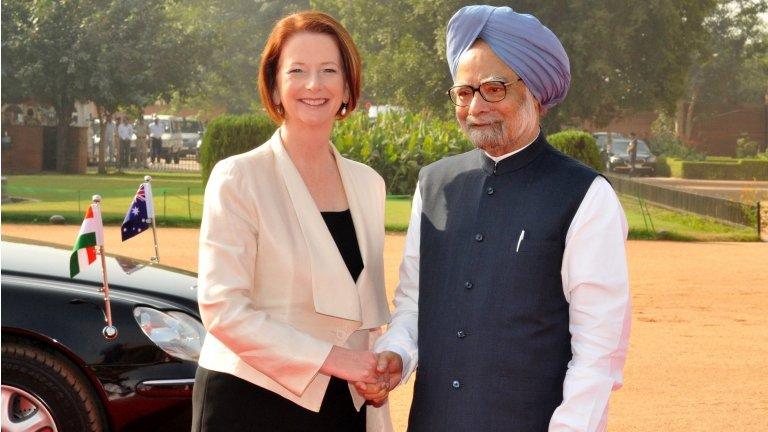Lingering impact of British nuclear tests in the Australian outback
- Published
.jpg)
A concrete marker stands on the exact spot where the atomic bombs were dropped
It seems remarkable today but less than 60 years ago, Britain was exploding nuclear bombs in the middle of Australia.
In the mid-1950s, seven bombs were tested at Maralinga in the south-west Australian outback.
The combined force of the weapons doubled that of the bomb dropped on the Japanese city of Hiroshima in World War Two.
In archive video footage, British and Australian soldiers can be seen looking on, wearing short sleeves and shorts and doing little to protect themselves other than turning their backs and covering their eyes with their hands.
Some reported the flashes of the blasts being so bright that they could see the bones of their fingers, like x-rays as they pressed against their faces.
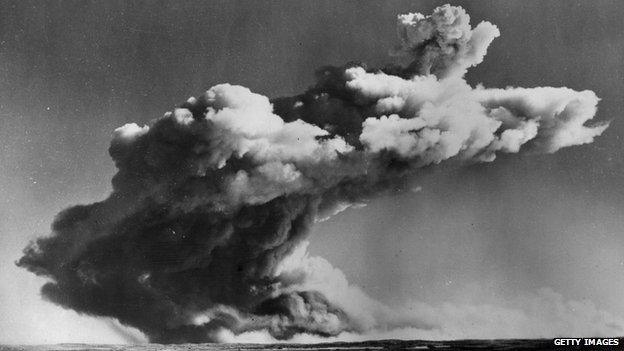
A cloud hangs over Australia's Monte Bello Islands after Britain tested its first atomic bomb
Much has been written about the health problems suffered by the servicemen as a result of radiation poisoning.
Far less well-documented is the plight of the Aboriginal people who were living close to Maralinga at the time.
'It was like a cancer'
"Every night I cry for them," Hilary Williams tells me as she sits around a campfire for an impromptu picnic of kangaroo tails laid on for our visit.
Her mother and grandparents all witnessed at least one of the explosions from just a few kilometres away.
Ms Williams said all three of them died young after suffering lung problems.
"It's so sad. They're not here anymore," she said, adding that she had heart problems she believes were also linked to the bombs.
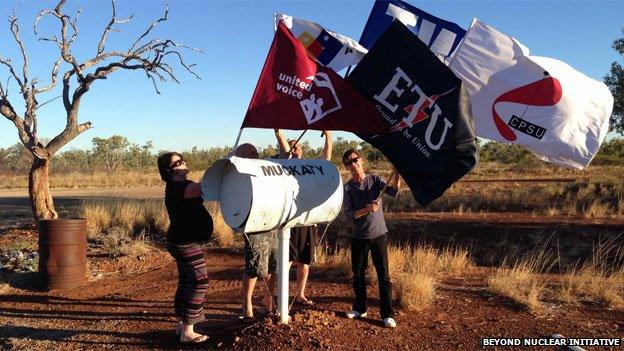
In June, Australia dropped plans for its first nuclear waste dump on Aborigine land

Locals like Hilary Williams (left) and Mima Smart shared their fears about the area's dark nuclear history
Locals around Maralinga spoke about a black mist of radioactive dust over their communities following the explosions.
"A lot of people got sick and died," said Mima Smart, an aboriginal community leader.
"It was like a cancer on them. People were having lung disease, liver problems, and kidney problems. A lot of them died," she said, adding that communities around Maralinga have been paid little by way of compensation.
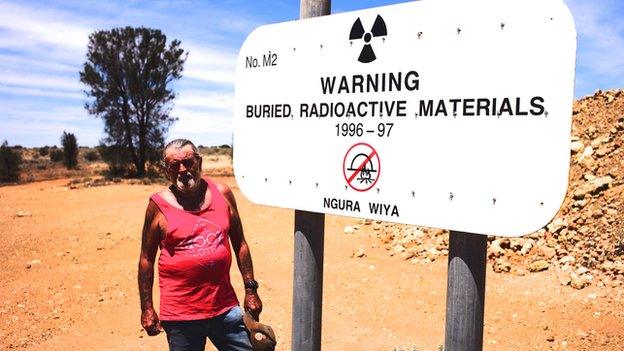
Caretaker Robin Matthews stands at the entrance of the Maralinga nuclear site
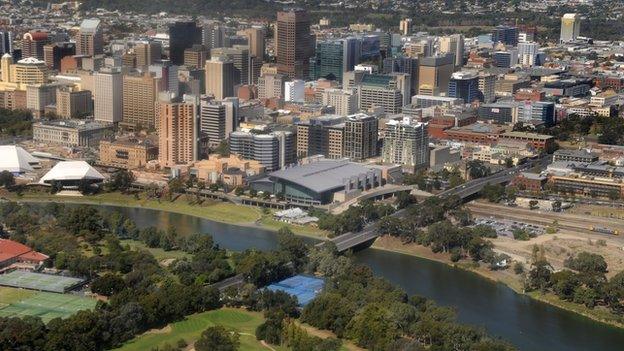
Adelaide, the nearest city to Maralinga, is a 10-hour drive away
'Not in our backyard'
Maralinga was chosen for its remoteness.
It's a ten hour drive to the nearest big city, Adelaide. But people here say that the Australian government was wrong to let the tests go ahead and that Britain acted irresponsibly.
"They didn't want to do it in their own back yard because their back yard wasn't big enough," said Robin Matthews, caretaker of the Maralinga Nuclear Test Site.
"They thought they'd pick a supposedly uninhabited spot out in the Australian desert. Only they got it wrong. There were people here."
During the 1960s and 70s, there were several large clean-up operations to try and decontaminate the site.
All the test buildings and equipment were destroyed and buried. Large areas of the surface around the blast sites was also scraped up and buried.
But Mr Matthews said the clean-up, as well as the tests themselves, were done very much behind closed doors with a high level of secrecy.
"You've got to remember that this was during the height of the Cold War. The British were terrified that Russian spies might try and access the site," he said.
The indigenous communities say many locals involved in the clean-up operation also got sick.
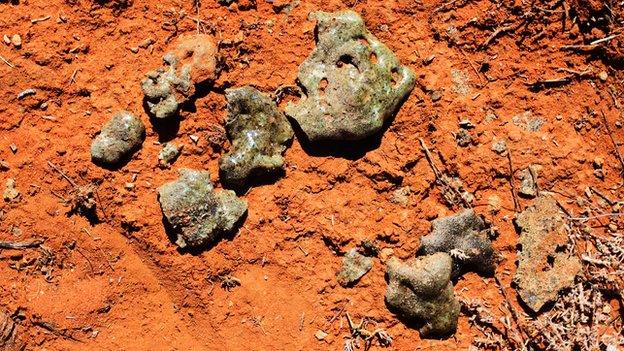
Soil at the nuclear site grow so hot from the blast that it melted and turned to silicon
'Sick land'
Maralinga has long been declared safe. There are even plans to open up the site to tourism.
But it was only a few months ago that the last of the land was finally handed back to the Aboriginal people. Most, though, say they have no desire to return there.
Mima Smart told me she regards Maralinga as sick land.
"I don't want to go back. Too many bad memories."
And even almost 60 years on, the land still hasn't recovered. Huge concrete plinths mark the spots where each of the bombs was detonated.
Around each, the blast area would have stretched for several kilometres.
The orangey red soil of the outback sparkles strangely green.
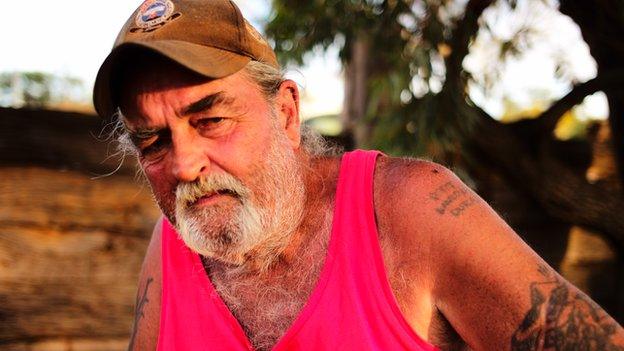
Robin Matthews: "Even the birds and the kangaroos still stay clear of this area"
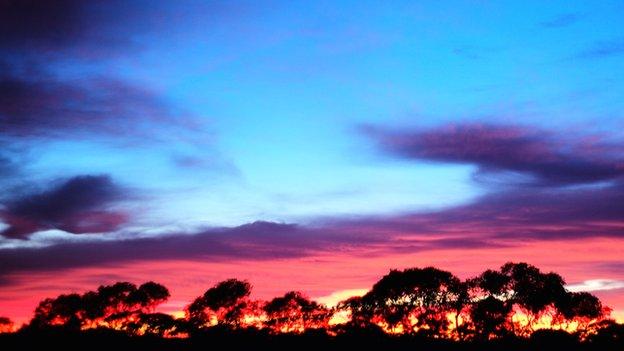
Could Maralinga be one of the darkest chapters in British Australian history?
If you look closely, you can see the ground is covered with what looks like broken glass, where the soil got so hot it literally melted and turned to silicon.
And even after all this time, the natural vegetation still won't grow back.
"The grass here only ever grows a few inches," said Mr Matthews. "Even the birds and the kangaroos still stay clear of this area."
More than half a century on, most people here still regard Maralinga as a dark chapter in British Australian history
- Published19 June 2014
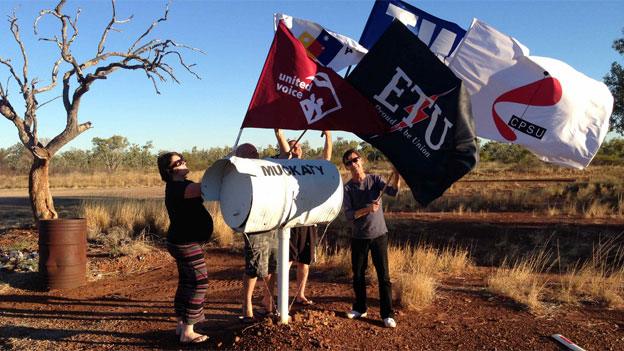
- Published18 October 2012
